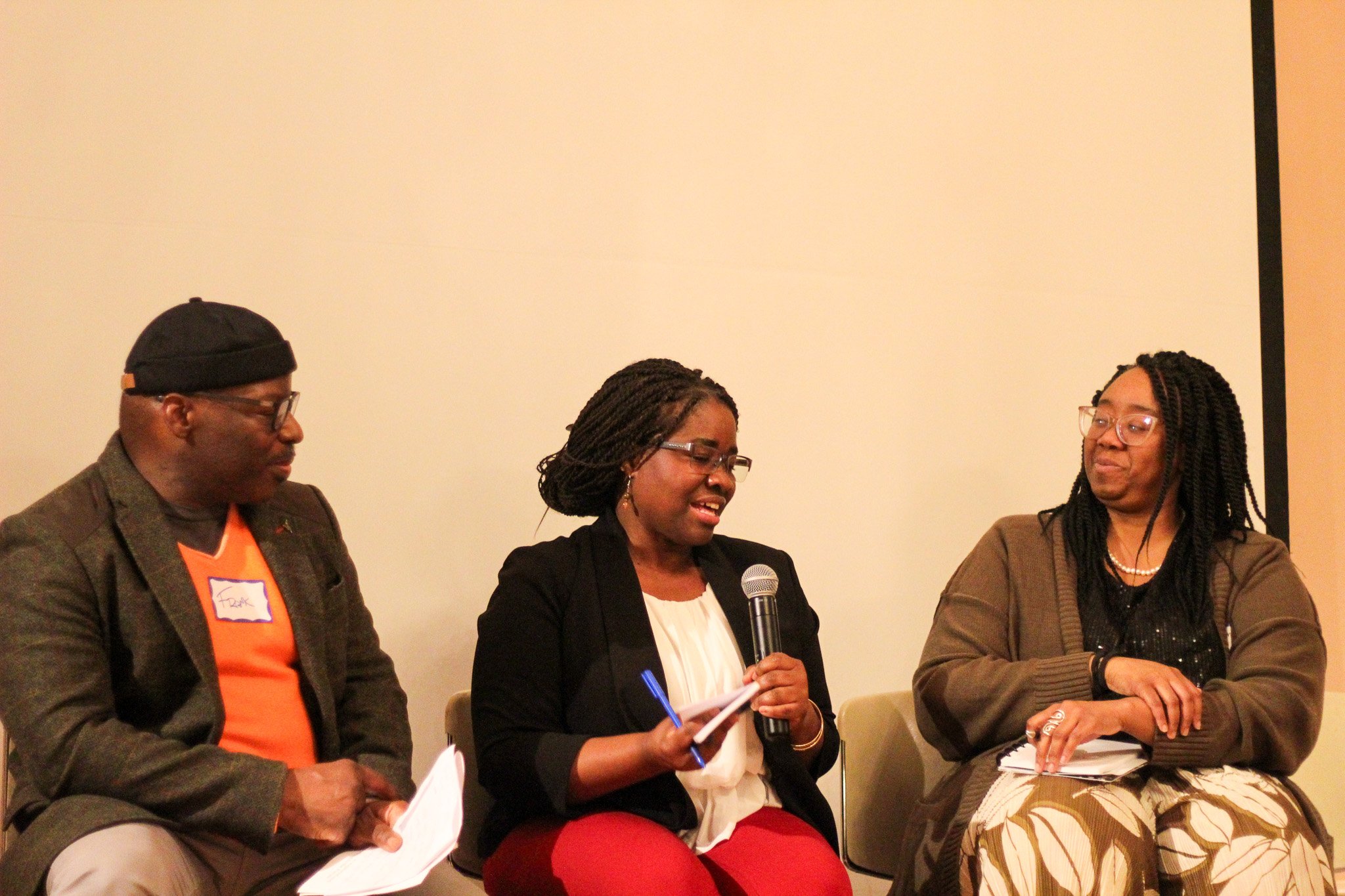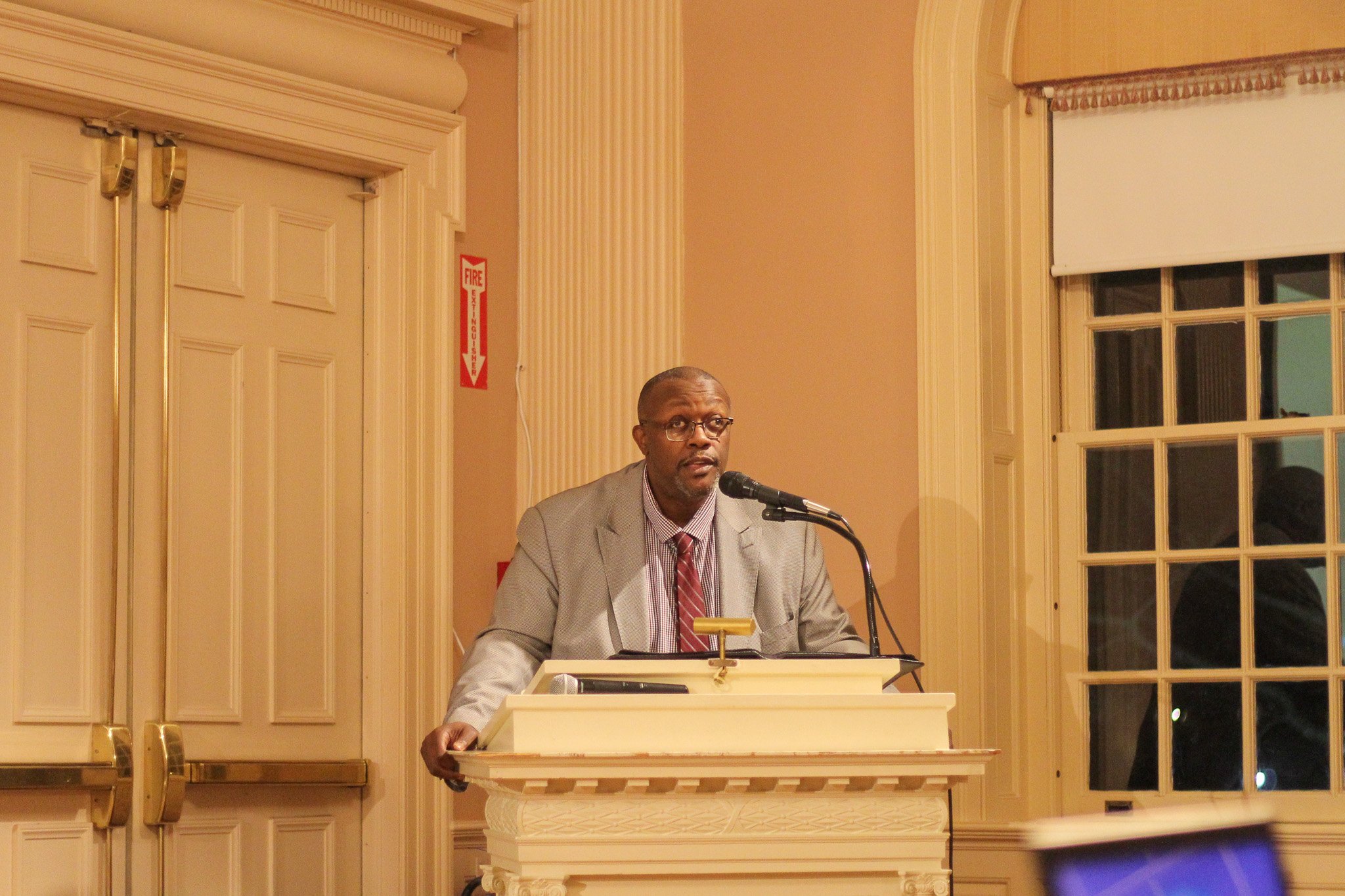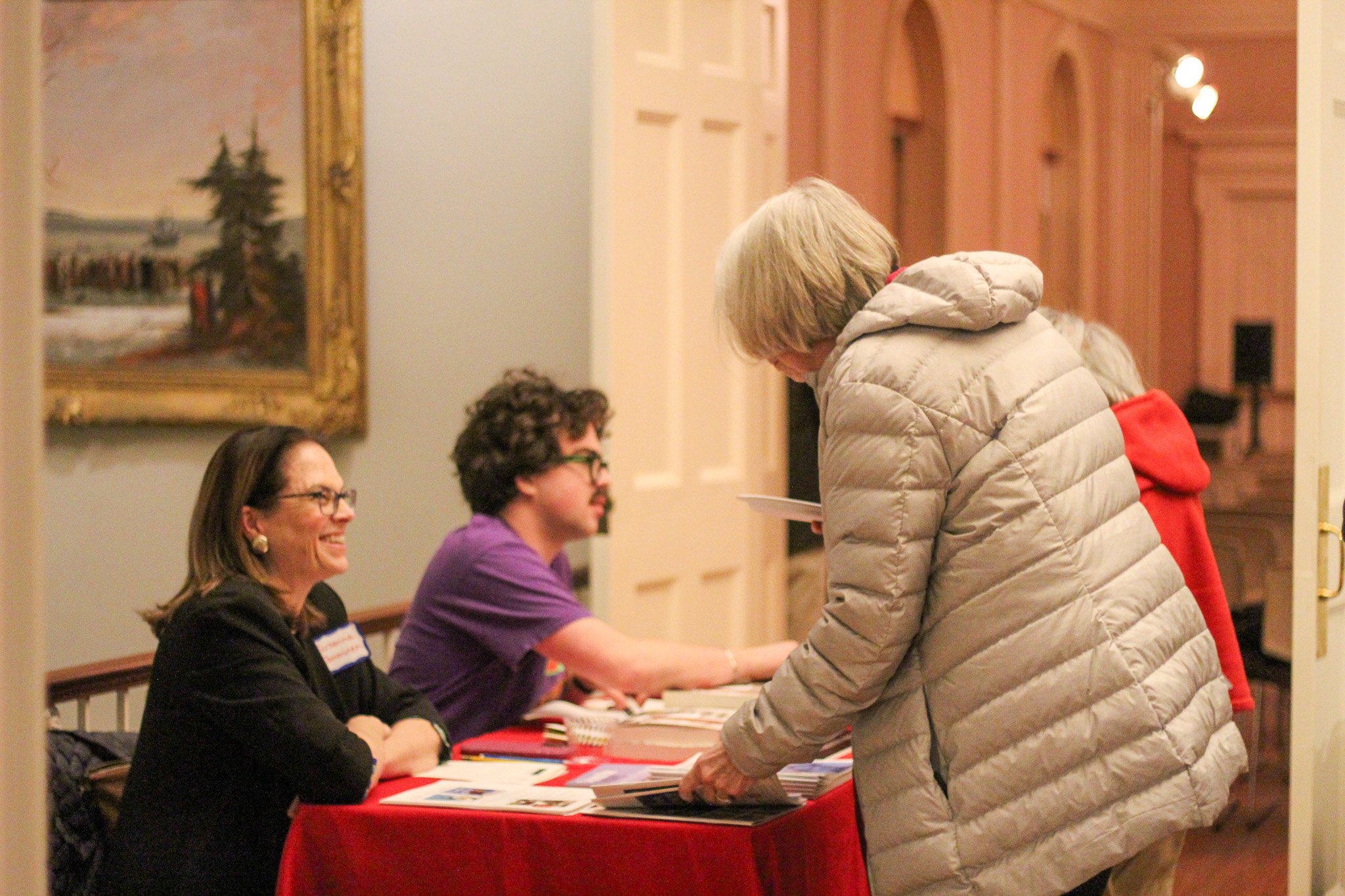
Black History Month | Books | New Haven Museum
 Frank Mitchell, Fiona Vernal, and Camesha Scruggs (from left to right) discuss the impact of African American Connecticut Explored at the New Haven Museum on Thursday. Photos Kapp Singer.
Frank Mitchell, Fiona Vernal, and Camesha Scruggs (from left to right) discuss the impact of African American Connecticut Explored at the New Haven Museum on Thursday. Photos Kapp Singer.
The New Haven Museum convened a group of historians to kickoff Black History month and celebrate the ten year anniversary of African American Connecticut Explored, a sweeping book highlighting “the long arc of the African American experience in Connecticut.”
The Thursday evening celebration—which was also livestreamed—focused on how the book has inspired a new generation of historians and galvanized the study of African American history in high schools across the state. The event also leads into the New Haven Museum’s upcoming exhibit, “Shining Light on Truth,” opening Feb. 14, which highlights previously untold histories about Black enslavement and resistance in New Haven. The exhibit includes research findings from the Yale & Slavery History Project and coincides with the Feb. 16 publication of David W. Blight’s much-anticipated book Yale and Slavery: A History. A preview discussion with the exhibit’s curators, David Jon Walker and Michael Morand, will be held Monday, Feb. 5 at the Beinecke Library. The event will also be streamed on Zoom.
In over 50 essays, the African American Connecticut Explored addresses everything from the lives of enslaved African Americans and their impact of slavery on the state’s economy, to the role of abolitionists in the fight for freedom. It covers the Black Panther trials in New Haven, Jackie Robinson’s racial justice work off the field in Hartford and Stamford, and depictions of Black life in the novels of Ann Petry. Those are some of the book’s numerous accounts of cultural and civil rights leaders across 350 years of history. African American Connecticut Explored was developed by the monthly history magazine Connecticut Explored in collaboration with the Amistad Center for Arts & Culture, and published by Wesleyan University Press.
“The exploration, study, reading, and writing of African American history in Connecticut is an ongoing march which we can never retreat from,” said Stacey Close, a professor of African-American history at Eastern Connecticut State University and an editor of African American Connecticut Explored.
Close explained that the book was instrumental in the passage of Connecticut Public Act 19-12, which requires high schools to offer courses in African American history and Puerto Rican history.
“Having been raised by a family with farming roots in Georgia, and attending public schools there for 12 years, not a single word about an African American was ever issued in any of my history courses in high school—not one,” Close said.
Public Act 19-12 is the first of its kind in the United States, and much of the curricula resulting from the bill is derived from the history uncovered in African American Connecticut Explored.
 Stacey Close.
Stacey Close.
“We’ve been building great momentum around these stories,” said Frank Mitchell, also an editor of the book and the curator-at-large at the Amistad Center for Art & Culture, “but there’s still a lot more to do.”
“It’s a really old state, and people open boxes every day and find new things,”he added.
Mitchell moderated a panel with professors Fiona Vernal and Camesha Scruggs where they discussed the impact of the book on their work and how they imagine the future of public history in Connecticut.
Vernal, an associate professor of history and Africana studies at the University of Connecticut, said African American Connecticut Explored was essential background reading as her research interests expanded to include the history of the African diaspora in Connecticut. She is working on Hartford Bound, a book and digital humanities project examining how race, migration, and mobility have impacted the urban history of Hartford.
“There are so many stories to tell,” said Vernal, who was inspired by the biographical approach to writing history she saw in African American Connecticut Explored. Today, she is particularly excited about uncovering the story of Catharine Freeebody, a 19th century Black philanthropist who donated much of her estate to support Hartford’s first African American church.
“Public history has always been telling the story of people who look like me,” said Scruggs, an assistant professor of history at Central Connecticut State University. She is currently researching the experiences of African Americans in Connecticut in the early 20th century.
“At the end of the day, historical figures were just normal people with normal lives,” Scruggs said.
Following the panel discussion, Mitchell turned to the audience to ask what they wanted to see in the future for public history in Connecticut. Some encouraged more research into the intersection of Native American and African American history, while others mentioned an expansion of Public Act 19-22 to include African American history before high school.
 Wesleyan University Press Editor-in-Chief Suzanna Tamminen sells books following the panel.
Wesleyan University Press Editor-in-Chief Suzanna Tamminen sells books following the panel.
Michael Ellison, who teaches at a preschool program at Augusta Lewis Troup School and is the superintendent of the Sunday school at St. Matthew’s church on Dixwell Avenue, said that he wants to bring the stories from African American Connecticut Explored to inspire his students.
“Children played a big part in the boycott struggle in the South,” Ellison said. “I’m gonna try to see if they have any history on what children did in New England.”
“The Connecticut books that we’ve published have not only been some of the most fun to work on, but also the most meaningful,” said Wesleyan University Press Editor-in-Chief Suzanna Tamminen.
“There is the sense that we’re bringing people together and serving a critical need,” she said.

